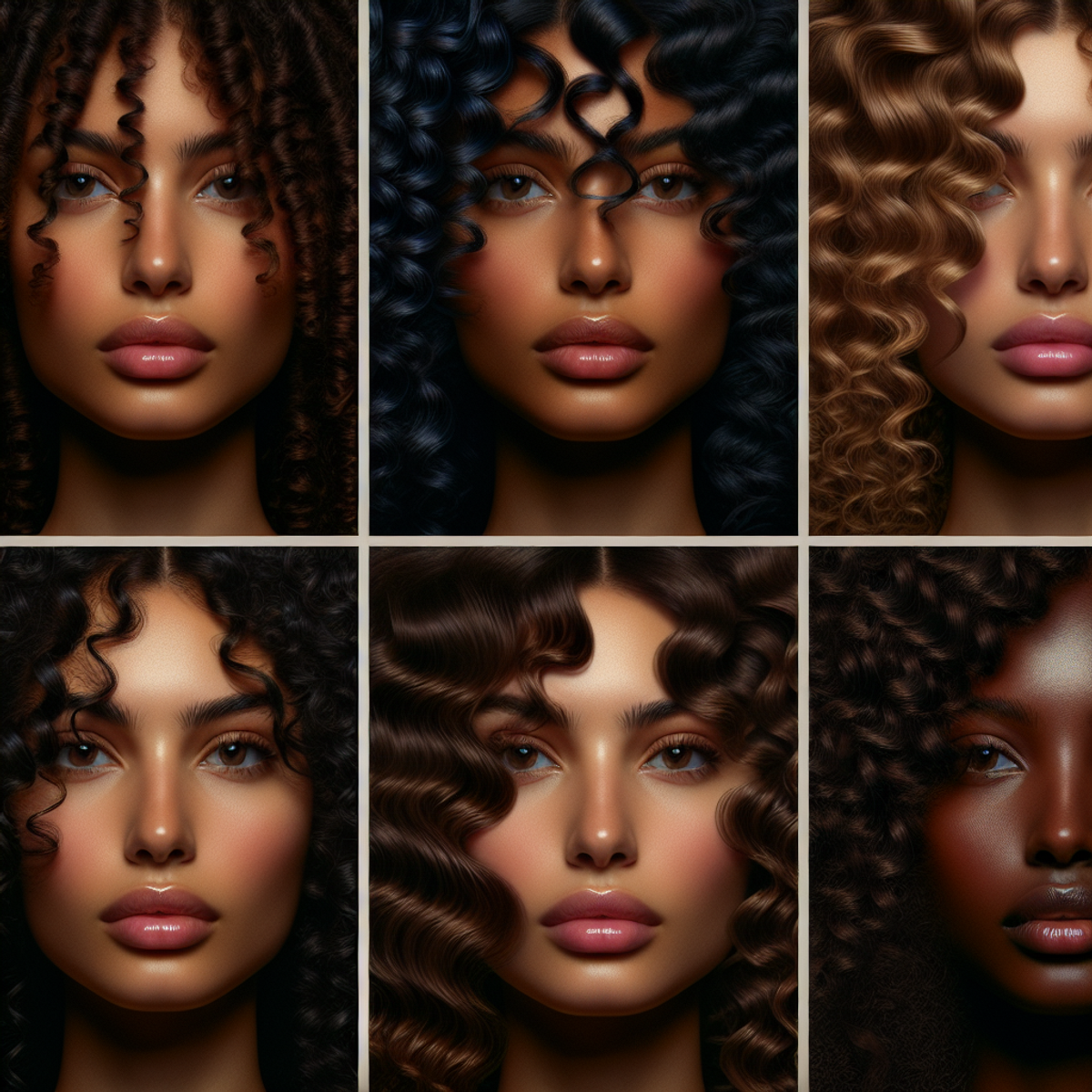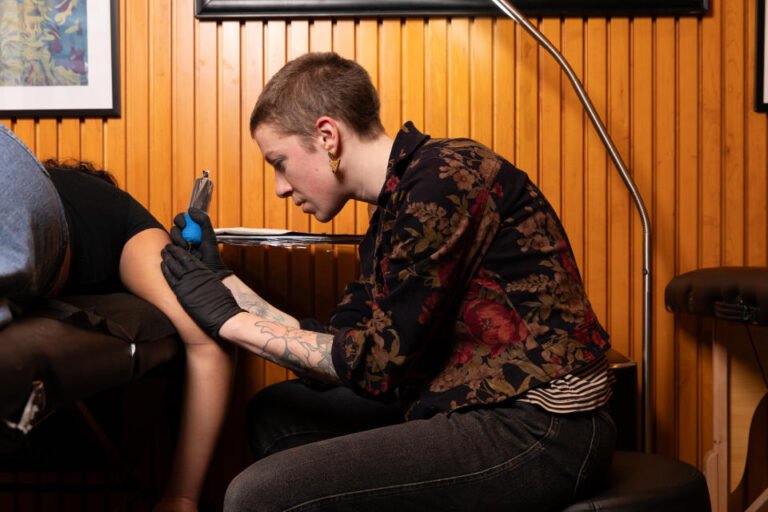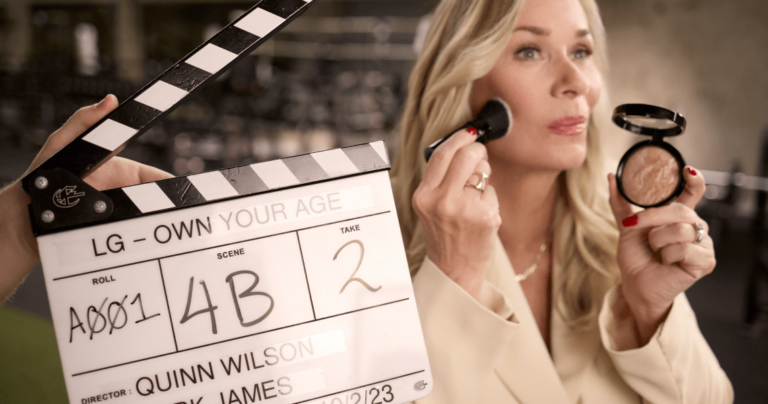How to Figure Out Your Curl hair Type

Introduction
Understanding your curl hair type is essential for properly caring for and styling your curls. Different curl types have unique characteristics that require specific techniques and products to enhance their natural beauty. By identifying your curl hair type, you can tailor your hair care routine to meet the specific needs of your curls.
Curl types are categorized into four main categories: straight (Type 1), wavy (Type 2), curly (Type 3), and coily (Type 4). Each category has further sub-classifications that describe the specific characteristics of the curls within that type.
In addition to the visual differences, curl types can also vary in terms of texture, porosity, and elasticity:
- Texture: How coarse or fine the individual strands of hair are.
- Porosity: The hair’s ability to absorb and retain moisture.
- Elasticity: How well the hair stretches and returns to its original shape without breaking.
These factors play a crucial role in determining the best approach to caring for your curls. It’s important to choose products and techniques that cater to your specific curl type, texture, porosity, and elasticity.
Embracing your natural curls is a journey of self-discovery and self-acceptance. All curl types are beautiful in their own unique way. By understanding and embracing your curl hair type, you can confidently rock your natural curls and showcase their true beauty.
Now, let’s explore each curl type in more detail to help you identify which category your hair belongs to.
The Different Curl Types Explained
The curl typing system provides a helpful framework for understanding the different types of curls and how to care for them. In this section, we will explore the first type of hair on the curl spectrum: Type 1 – Straight Hair.
Type 1: Straight Hair
While some variations of straight hair may have a slight wave or bend, they still fall under the straight category. Type 1 hair is known for its smoothness, lack of defined curls, and tendency to get greasy easily. Here are the key features of type 1 hair:
- Smoothness: Type 1 hair is characterized by its sleek and smooth texture. It lacks the natural bends or curls that are present in other hair types.
- Lack of Defined Curls: Unlike wavy, curly, or coily hair, type 1 hair does not have distinct curls or waves. It tends to be relatively straight from root to tip.
- Greasy Easily: Straight hair has a tendency to become greasy more quickly than other hair types due to the direct path oil can travel from the scalp to the ends.
Suitable Hairstyles for Straight Hair
If you have type 1 straight hair, there are plenty of hairstyle options available to you. Here are a few suggestions:
- Sleek Ponytail: A sleek ponytail can showcase the smoothness and shine of your straight locks. Use a fine-tooth comb to gather your hair into a high or low ponytail for a polished look.
- Voluminous Blowout: Embrace the natural volume of your straight hair by giving it a blowout. Use a round brush while blow-drying your hair to add body and bounce.
By understanding the characteristics of type 1 hair, you can tailor your hair care routine to keep your straight locks looking their best.
Type 2: Wavy Hair
The curl typing system, developed by hairstylist Andre Walker, is widely used to categorize hair into four main types (1, 2, 3, and 4) based on their pattern and shape. Type 2 hair falls under the wavy category and is characterized by noticeable S-shaped waves or loose curls. This type of hair can vary in intensity, leading to further sub-classifications: 2A, 2B, and 2C.
Characteristics of Type 2 Hair
Type 2 hair has a natural wave pattern that can range from gentle bends to more defined curls. Here are the key characteristics of each sub-classification:
Type 2A
This type has loose waves that are relatively fine and prone to becoming flat. Type 2A hair tends to be more susceptible to frizz and may lack volume.
Type 2B
With more defined waves that range from tousled to spiral-like patterns, type 2B hair has a medium texture. It is often prone to frizz and can benefit from products that enhance definition without weighing it down.
Type 2C
This category features distinct S-shaped curls that are tighter than type 2B. Type 2C hair is typically thick and coarse, with a tendency towards frizz. It requires extra moisture to maintain its shape and prevent dryness.
Styling Tips for Wavy Hair
If you have type 2 hair, you can enhance and define your natural waves with the following tips:
- Use texturizing sprays specifically designed for wavy hair to add volume and definition without weighing down your locks.
- After applying styling products like mousse or gel, scrunch your hair using your hands to encourage the formation of defined waves.
- Overnight braids or twists can create soft waves in type 2 hair. Simply dampen your hair, braid or twist it, and let it dry overnight. When you undo the braids or twists in the morning, you’ll have beautiful waves.
- To speed up the drying process without disturbing your waves, use a diffuser attachment when blow-drying your hair. This helps to reduce frizz and maintain the natural pattern.
- Type 2 hair tends to get weighed down easily, so try to avoid washing it every day. Instead, opt for a gentle shampoo and focus on conditioning to maintain moisture.
Embracing Your Wavy Hair
Many celebrities embrace and rock their wavy locks. Here are a few examples:
- Blake Lively: Known for her effortless beachy waves, Blake Lively often showcases how stunning type 2 hair can look.
- Lauren Conrad: With her signature California girl style, Lauren Conrad demonstrates how to enhance and style type 2 hair for a polished yet laid-back look.
- Salma Hayek: Salma Hayek’s luscious waves are a perfect example of how type 2C hair can exude glamour and elegance.
Remember, every curl type is beautiful, and embracing your natural texture is key to finding joy in your hair journey. Experiment with different products and techniques to find what works best for you and your type 2 waves.
Type 3: Curly Hair
The curl typing system, developed by hairstylist Andre Walker, is widely used to categorize hair into four main types (1, 2, 3, and 4) based on their pattern and shape. In this section, we will focus on type 3 hair, which is known for its well-defined curls or spirals that may vary in size. Type 3 hair has three subcategories (3A, 3B, and 3C) based on the tightness of the curls.
Type 3A
This subcategory features loose curls with a slight S-shape. The curls are usually large and have a lot of bounce. Some celebrities with type 3A hair include Zendaya and Blake Lively.
Type 3B
The curls in this subcategory are tighter and more springy compared to type 3A. They form ringlets and have a medium circumference. Kerry Washington and Alicia Keys are examples of celebrities with type 3B hair.
Type 3C
This subcategory consists of tightly coiled curls that are densely packed together. The curls in this category have a small circumference and can be prone to frizz. Solange Knowles and Yara Shahidi are well-known individuals with type 3C hair.
Managing curly hair can be challenging, but proper care can bring out the best in your curls. One key aspect of caring for type 3 hair is moisture and hydration. Curly hair tends to be drier than straight or wavy hair due to its structure, so it’s important to keep it hydrated to prevent frizz and breakage.
Tips for Maintaining Moisture in Type 3 Hair
To maintain moisture in your curly hair:
- Use moisturizing shampoos: Look for sulfate-free shampoos that won’t strip your hair of its natural oils. Instead, they will help retain moisture.
- Apply leave-in conditioners: Leave-in conditioners are essential for providing moisture and keeping your curls hydrated throughout the day. They also help in detangling and reducing frizz.
- Try curl creams: Curl creams are great for defining and enhancing your natural curls. They provide moisture, hold, and minimize frizz.
- Protective hairstyles: Experiment with protective hairstyles like twist-outs or braid-outs to keep your hair protected from harsh weather conditions and reduce manipulation.
Remember that every individual’s hair is unique, so it might take some trial and error to find the right products and techniques that work best for your type 3 curls. Embrace your natural curls and have fun experimenting with different styles and products to enhance your beautiful locks!
In the next section, we will explore type 4 hair, which is known for its tightly coiled or zigzag pattern. We will discuss its characteristics, styling challenges, and suitable care routines to keep your coily hair looking healthy and vibrant. But before we move on, let’s briefly touch on the concept of porosity, elasticity, and other factors that play a role in managing curly hair.
Type 4: Coily Hair
The widely used curl typing system was developed by hairstylist Andre Walker, categorizing hair into four main types (1, 2, 3, and 4) based on their pattern and shape.
Type 4 Hair: This category encompasses tightly coiled or zigzag patterns, often referred to as “kinky.” It further has sub-classifications (4A, 4B, and 4C) that distinguish between different coil sizes and textures within this category.
Characteristics
Coily hair tends to have a lot of shrinkage, making it appear shorter than it actually is. The strands form small, tight coils that can range from fine and wiry (4A) to densely packed and fragile (4C). To care for this hair type effectively, it’s important to understand the unique needs associated with each sub-classification.
Styling Challenges
Due to the nature of coily hair, it may be prone to dryness and breakage if not properly moisturized and handled with care. Detangling can also be a challenge due to the tightly coiled pattern. Protective styles like braids or twists are recommended to minimize manipulation and reduce the risk of damage. Regular deep conditioning treatments from trusted sources such as Penny James Trichology Center can also help maintain moisture levels and improve manageability.
Celebrities
Notable celebrities who embrace their coily hair type include Lupita Nyong’o, Viola Davis, and Solange Knowles. They have been influential in promoting the beauty of natural coily hair.
Remember that while the curl typing system provides a general framework, individual variations in curl pattern can exist. Your hair is unique and may not fit perfectly into one category. If you’re still unsure about your curl type, seeking professional advice from a hairstylist who specializes in curly hair, such as those found on Healthline’s curated list, can provide valuable insights tailored to your specific needs.
Methods for Determining Your Curl Type
Determining your curl type can be an exciting journey of self-discovery that allows you to better understand and care for your unique curls. While the curl typing system provides a general framework, it’s important to remember that individual variations in curl pattern can exist, and your hair may not fit perfectly into one category. Here are two common methods you can use to determine your curl type:
1. The “Hair Strand” Test
- Start by taking a freshly washed strand of hair and examine it closely.
- Observe the shape and pattern of the strand. Is it straight, wavy, curly, or coily?
- Pay attention to the width of the wave, curl, or coil. Is it loose or tight?
- Compare your hair strand with the visual guide provided for each curl type (Type 1 to Type 4) to help you identify which category it falls into.
- Remember that multiple textures can exist on one person’s head, so consider the different curl patterns when determining your overall hair type.
2. The “Wash-and-Go” Test
- After washing your hair, allow it to air dry without any product or manipulation.
- Take note of how your hair naturally dries. Does it form waves, curls, or coils?
- Examine the size and shape of the waves, curls, or coils. Are they loose or tight?
- Compare your natural dried hair with the visual guide for each curl type to determine which category best represents your curls.
These methods provide a starting point for understanding your curl type; however, if you’re still unsure about your hair type or would like professional advice tailored specifically to your curls, consider consulting a hairstylist who specializes in curly hair. They can offer personalized guidance and recommend suitable products and techniques based on your unique hair characteristics.
Remember, the goal is not to fit your hair into a specific box but rather to gain a better understanding of its natural texture and pattern. Embrace the beauty of your curls, regardless of their type, and celebrate the uniqueness that each curl brings to your individual style.
“Understanding your curl type is like unlocking a secret code to beautiful, healthy curls. Embrace the journey of self-discovery and have fun experimenting with different styles and products!”
Considering Porosity, Elasticity, and Other Factors
While curl type is a major factor in understanding your hair, other properties like porosity and elasticity also play a role in its overall health and appearance.
Porosity
Porosity refers to the hair’s ability to absorb and retain moisture. It can be categorized into three levels: low, medium, and high.
- Low porosity hair: tightly bound cuticle layer with flat scales, making it difficult for moisture to penetrate.
- Medium porosity hair: looser cuticle layers that allow moisture to pass through easily.
- High porosity hair: gaps and holes in the cuticle, allowing moisture to enter and leave quickly.
A simple test to determine your hair’s porosity involves placing a few strands of clean, dry hair into a bowl of water:
- If it floats, you have low porosity hair.
- If it sinks slowly, you have medium porosity hair.
- If it sinks quickly, you have high porosity hair.
Understanding your hair’s porosity level is crucial for selecting the right products and creating an effective hair care routine.
Elasticity
Elasticity refers to the hair’s ability to stretch and return to its original length without breaking. Healthy hair should have a good balance of elasticity and strength.
The popular “strand stretch” test involves taking a single strand of wet hair and gently stretching it to see how much it will stretch before breaking:
- If the strand stretches and returns without breaking, it has good elasticity.
- If the strand stretches but does not return and breaks, it may have low elasticity.
Assessing your hair’s elasticity can help you determine its overall health and resilience.
Choosing Products Based on Porosity and Elasticity
When considering suitable products for your curls, it’s important to take both curl type and porosity/elasticity needs into account.
- For low porosity hair, lightweight products such as liquid-based moisturizers are recommended.
- Medium porosity hair benefits from a variety of products but may require occasional protein treatments for strength.
- High porosity hair benefits from heavier emollients like creams and butters to help seal in moisture.
By understanding the unique combination of your curl type, porosity, and elasticity, you can tailor your hair care routine for optimal results.
Embracing Your Unique Curl Pattern
Having multiple curl textures on one head can be a fun challenge to navigate, but it also allows for versatile styling options. Here are some ways you can embrace your unique curl pattern:
- Experiment with Different Styling Techniques and Products: Each curl type may require different care and styling methods. Try out various techniques like finger coiling, plopping, or diffusing to see what works best for each section of your hair. Use products specifically formulated for your curl type, such as creams for coils or gels for waves.
- Avoid Comparisons and Embrace Your Own Hair: It’s easy to get caught up in comparing our curls to others, especially with the rise of social media. Remember that everyone’s hair is unique, and what works for someone else may not work for you. Instead of striving for someone else’s curls, focus on enhancing and loving your own.
- Learn About Your Curl Type: Understanding your specific curl pattern can help you better care for and style your hair. There are different systems used to classify curls, such as the Andre Walker Hair Typing System or the LOIS System. Identifying whether you have loose waves, tight coils, or anything in between can guide you in choosing appropriate products and techniques.
- Seek Inspiration from Others: While it’s important not to compare yourself to others, seeking inspiration from fellow curly-haired individuals can be helpful. Look for tutorials and styling tips from people who have a similar curl pattern or hair type as yours. This way, you can learn from their experiences and adapt their techniques to suit your own needs.
- Take Care of Your Scalp: Healthy hair starts with a healthy scalp. Make sure to cleanse and moisturize your scalp regularly, using products that are gentle and nourishing. Massaging your scalp with oils like coconut or jojoba oil can also promote blood circulation and stimulate hair growth.
- Protect Your Hair While You Sleep: Friction from cotton pillowcases can cause breakage and frizz for curly hair. Consider using a satin or silk pillowcase, as the smooth surface helps reduce friction and moisture loss. Alternatively, you can wrap your hair in a satin scarf or wear a satin bonnet to protect your curls overnight.
Remember, embracing your unique curl pattern is all about finding what works best for you and celebrating the beauty of your natural hair. If you’re interested in learning more about how to style curly hair, you might find this comprehensive guide helpful. Additionally, if you’ve noticed changes in your curl type over time, it’s not uncommon as hair texture can evolve naturally, as discussed on this Quora thread.
The Beauty of Every Curl Type
The beauty of every curl type lies in the uniqueness and individuality it brings. Embracing your natural curls is not just about accepting a specific curl type; it’s about celebrating the variety and richness of curls in all their forms. Each curl pattern tells a story and reflects the beautiful diversity present in our world.
Curl confidence is about recognizing that there is no universal standard for beauty when it comes to curls. It’s about understanding that every wave, curl, or coil is an essential part of someone’s identity and self-expression. By appreciating the full spectrum of curl types, you can foster a culture of inclusivity and empowerment within the curly hair community.
In sharing inspiring stories of individuals who have come to love and accept their natural curls, we can celebrate the journey toward curl confidence. These stories serve as powerful reminders that beauty knows no bounds or limitations. They inspire others to embrace their unique curl patterns with pride and self-assurance.
Let these stories be a source of encouragement for anyone who may be struggling with accepting their curls. Remember that your curl type is an integral part of what makes you uniquely beautiful. Whether you have waves, loose curls, tight coils, or anything in between, your curls are worthy of love and celebration.
Final Thoughts
When it comes to figuring out your curl hair type, it’s important to remember that it’s not just about categorizing your hair into a specific type or pattern. It’s about understanding and embracing the uniqueness of your curls and finding what works best for you. Here are a few final thoughts to keep in mind:
- Enjoy the journey: Discovering your curl hair type can be an exciting process. Take the time to experiment with different products, techniques, and styles. Embrace the opportunity to learn more about your hair and what makes it special.
- Nourish and care: While understanding your curl pattern is helpful, it’s even more important to prioritize the overall health of your hair. Focus on nourishing and caring for your curls through proper hydration, deep conditioning treatments, and gentle handling. Remember that healthy hair is beautiful hair, regardless of its specific type or texture.
- Self-expression: Your curl hair type is just one aspect of your unique identity. Use it as a tool for self-expression and embrace your natural beauty. Whether you rock sleek ponytails with straight hair or define your curls with a wash-and-go style, confidence and authenticity will always shine through.
In conclusion, figuring out your curl hair type is a valuable step towards understanding and caring for your curls. It allows you to tailor your hair care routine to meet the specific needs of your hair. However, don’t let the focus on curl patterns overshadow the beauty of diversity within the curly community. Every curl type is beautiful in its own way, and by embracing our unique textures, we can celebrate the richness of curly hair together.
Now go forth with confidence and rock those curls!










